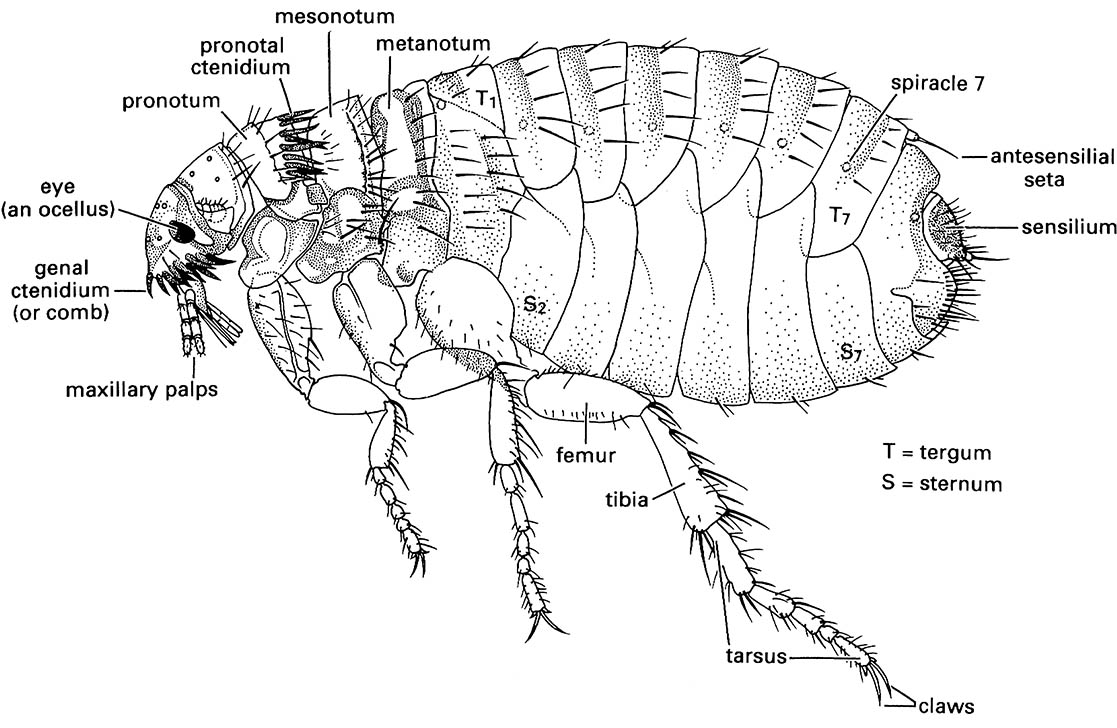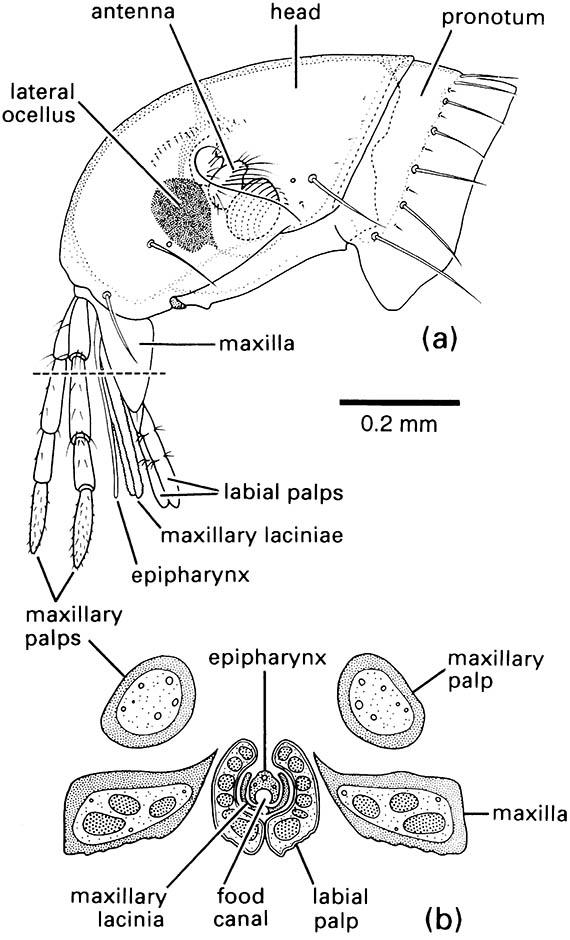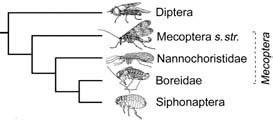Box 15.4. Siphonaptera (fleas)
The Siphonaptera is an order of some 2500 species, all of which are highly modified, apterous, and laterally compressed ectoparasites. Development is holometabolous. The mouthparts (Fig. 2.15) are modified for piercing and sucking, without mandibles but with a stylet derived from the epipharynx and two elongate, serrate lacinial blades within a sheath formed from the labial palps. The gut has a salivary pump to inject saliva into the wound, and cibarial and pharyngeal pumps to suck up blood. Compound eyes are absent, and ocelli range from absent to well developed. Each antenna lies in a deep lateral groove. The body has many back-wardly directed setae and spines; some may be grouped into combs (ctenidia) on the gena (part of the head) and thorax (especially the prothorax). The large metathorax houses the hind-leg muscles. The legs are long and strong, terminating in strong claws for grasping host hairs.
The large eggs are laid predominantly into the host’s nest, where free-living worm-like larvae (illustrated in the Appendix) develop on material such as shed skin debris from the host. High temperatures and humidity are required for development by many fleas, including those on domestic cats (Ctenocephalides felis) (illus- trated here), dogs (C. canis), and humans (Pulex irritans). The pupa is exarate and adecticous in a loose cocoon. Both sexes of adult take blood from a host, some species being monoxenous (restricted to one host), but many others being polyxenous (occurring on several to many hosts). The plague flea Xenopsylla chiopis belongs to the latter group, with polyxeny facilit- ating transfer of plague from rat to human host (section 15.5.3). Fleas transmit some other diseases of minor significance from other mammals to humans, including murine typhus and tularemia, but apart from plague, the most common human health threat is from allergic reaction to frequent bites from the fleas of our pets, C. felis and C. canis.
Fleas predominantly use mammalian hosts, with relatively few birds having fleas, these being derived from many lineages of mammal flea. Some hosts (e.g. Rattus fuscipes) have been reported to harbor more than 20 different species of flea, and conversely, some fleas have over 30 recorded hosts, so host-specificity is clearly much less than for lice.
Phylogenetic relationships are considered in section 7.4.2 and depicted in Fig. 7.6.


(a) lateral view of head; (b) transverse section through mouthparts. The plane of the transverse section is indicated by the dashed line in (a). (After Snodgrass 1946; Herms & James 1961)

The broken lines indicate a paraphyletic taxon, with its name italicized; s. str. refers to the restricted sense. (After Whiting 2002)



